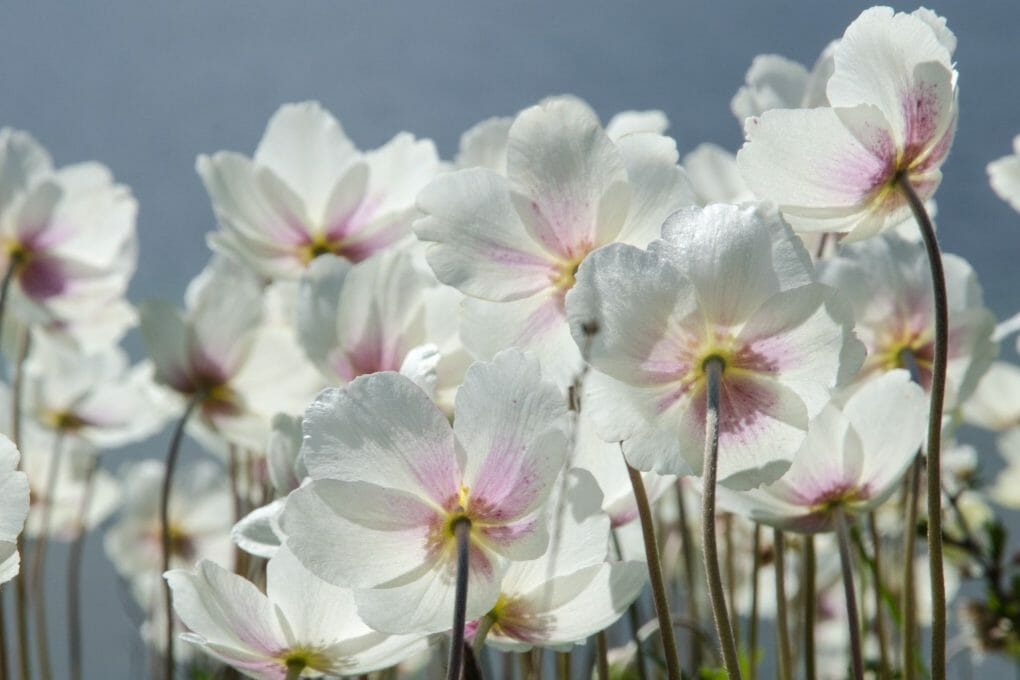Are Anemones Deer Resistant? 9 Ways to Protect Your Anemones from Deers
Most of the time, deer don’t eat anemone plants. They are known as plants that deer won’t eat. But deer may eat an anemone if they have nothing else to eat. Anemones don’t look or taste good to deer, so they will only eat them if they are starving and have nothing else to eat.

Deer can also crush anemone plants. Even though they probably won’t eat them, deer can hurt populations of anemones by trampling the plants. This is especially true in places with many deer but not enough food.
Table of Contents
9 Ways to Protect Your Anemones from Deers
There is no need to protect your anemone plant from deer in your garden. It’s more likely that they won’t eat it than they will. However, there are a variety of steps that you can take to protect your anemones from being eaten by deer.
Eliminate Food Sources
Anemones may be a target for deer if you have other edible plants in your garden. Eliminating the deer’s access to other food sources is one way to protect your anemones from being eaten.
All ripe fruits and vegetables should be picked up from the ground, and any plants that attract deer should be trimmed back. Removing these sources of nourishment can reduce the likelihood that deer will visit your garden and cause damage to your anemones.
Deer Repellents
Deer can be scared away by a variety of human-made and natural products. You can use any of these to prevent deer from eating your anemones. These repellents are effective because they either alter the plants’ taste or emit odors that are offensive to deer.
There are also natural alternatives, such as using soap or garlic to impart an unpleasant flavor to the plants. In addition, you can make your deer repellent by combining water, vinegar, and peppermint oil in the appropriate proportions.
You can easily prevent deer from eating your anemones and other plants by spraying them with a repellent made specifically for deer. Because the repellent can be rinsed away, it is important to remember to reapply it after it rains or whenever the plants become wet.
Deer Resistant Planting
Deer-resistant planting can be a great way to protect your garden from unwanted deer activity. Many plants can be used as deer repellents, and the best thing about them is that they’re easy to install. You need simple supplies like stakes, wire screening, or fences, and you’re ready to go.
Once you’ve chosen the right plant variety for your specific environment and situation, it’s important to follow proper installation instructions. Always make sure that the plant is properly rooted for it to work effectively deterrent against deer. Finally, monitor your garden regularly in order not only to see if there has been any decrease in animal activity but also to check on the health of your plants!
- Plants with sharp leaves or thorns like globe thistle
- Furry-leafed plants like Lamb’s Ears
- Aromatic or flavorful plants (like rosemary and garlic. The deer’s keen sense of smell helps it avoid unpleasant vegetation.
- Like Jack in the Pulpit, plants with extremely thick sap are toxic to humans. The only plants that deer will avoid eating, regardless of their hunger level, are the poisonous ones. It’s important to make sure your pets won’t eat them if you plant them.
Dogs
Dogs can also be a great deterrent against deer. Dogs are territorial by nature and typically chase away any animals they see as a threat. This means your garden will remain free of deer without needing expensive fencing or other landscaping supplies. Keep your pets leashed when you’re outside, and watch out for fences that may accidentally border onto your prized vegetable gardens.

Fencing
Deer can be prevented from eating your anemones and other garden plants by erecting a fence around the area. The fence must be high enough to keep deer out so they can’t jump over it. You can make a deer fence at least eight feet high.
Deer can be kept away from your anemones with the help of electric fencing. However, electric fences need more upkeep than conventional fences.
If you want to protect your anemones from deer, you can use netting. The plants can be defended from herbivores and tramplers by erecting a net.
Hanging Baskets
You can prevent deer from eating your anemone plants if you keep them in hanging baskets and suspend the baskets from a tree or another structure. Because of this, it will be challenging for the deer to access the plants and consume them.
You can easily prevent deer from eating your anemones by planting them in a hanging basket and then suspending them in a location they cannot access. This is a great alternative to consider if you don’t want to construct a fence around your entire garden.
Mass Planting
Even though the deer will still eat some of the flowers, at least you’ll have some left over after they’re done. Instead of planting a single Hydrangea (which would be eaten), multiples of the same variety can be grown in the same area. To avoid going out of their way, deer typically only eat the outer plants in a cluster.
Motion Activation
Another deterrent that can be brought in to help keep deer away from your garden is motion-activated lights. These lights will turn on when they sense movement, so you’ll know immediately if any deer are trying to get inside. The downside of this type of deterrent is that it may not work every time, and it’s quite heavy to move around.
Sprinklers
Setting up a sprinkler system in your garden is a simple way to prevent anemones from being eaten by deer. As a result, deer will avoid areas sprayed with water. Sprinkler systems with automatic watering can be found at any hardware or home improvement store. Simply turn on and off the sprinklers at predetermined intervals.
There will be no way for deer to predict when the sprinklers will activate, so they will stay away. This is a great alternative if you don’t want to put up a fence or use chemical deterrents.
